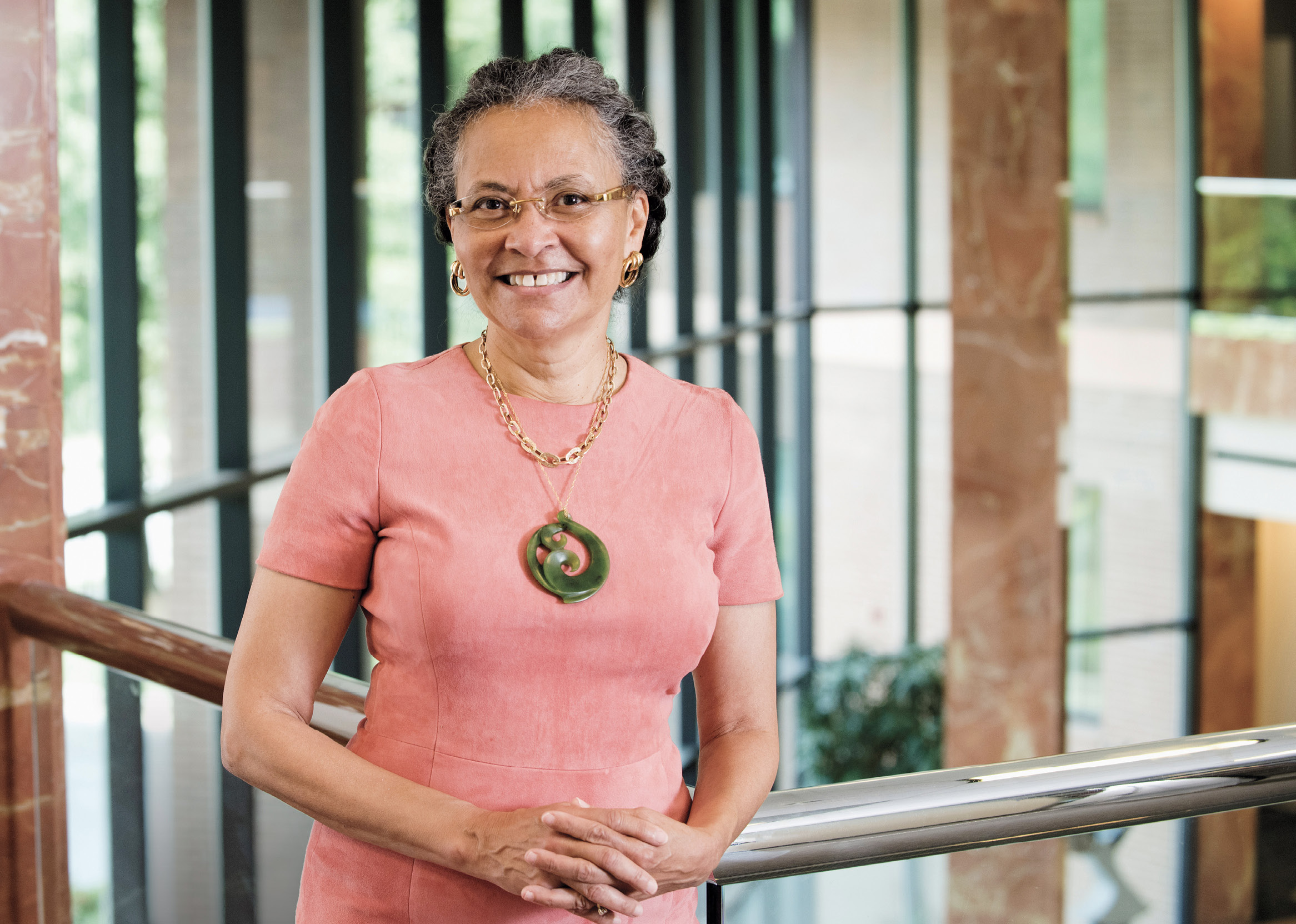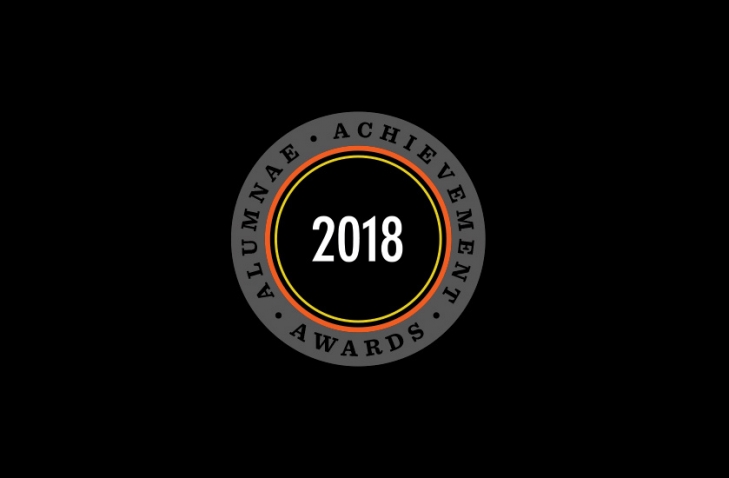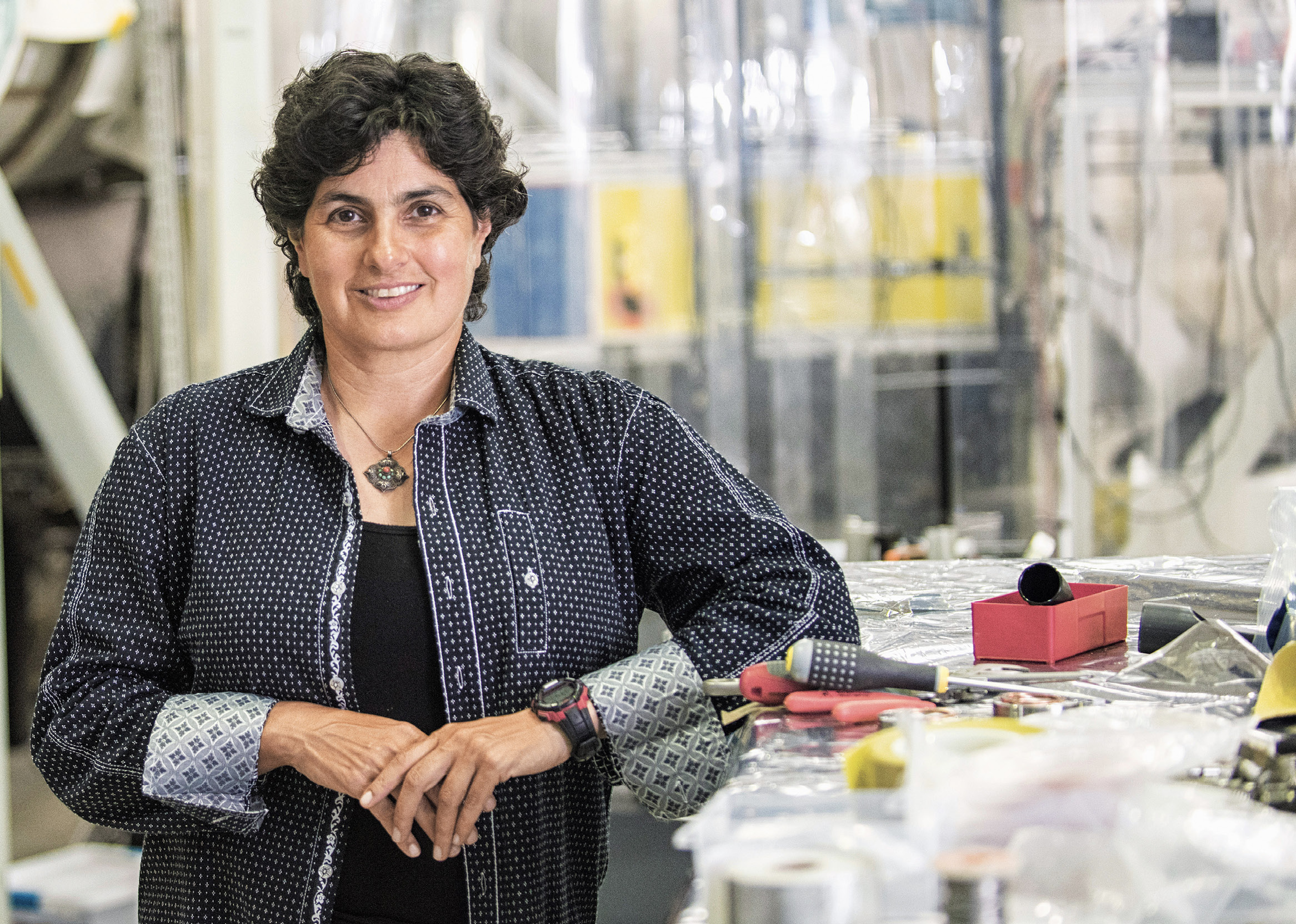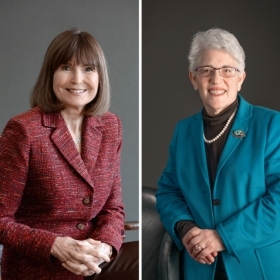
The eldest daughter of a surgeon-father and a mathematician-mother, Camara Jones ’76 grew up knowing that she and her two younger sisters would become physicians.
“My mother wanted to be a doctor but had been told in those days women aren’t doctors,” Jones recalls. “It was never a blatant thing really, but she subtly communicated to us that medicine was the best way to contribute to society.”
When the time came, Jones applied to medical school—as would her sisters.
But before she headed to Stanford Medical School, Wellesley presented her with an opportunity that would be life-changing and career-altering. The College nominated Jones, a molecular biology major, for the Luce Scholars program, allowing her to spend a year in Asia.
“One of my friends told me to take a question with me because I would be out of the United States for a year, and when I came back, I would have fresh eyes for this country,” Jones says. “The question I took with me to the Philippines was to understand something about race relations.”
While traveling abroad, Jones learned about and observed different systems of structured inequity and returned to the U.S. with what she says was more of a public-health orientation to medicine.
After Stanford, Jones went on to earn a master’s of public health and a doctorate in epidemiology from Johns Hopkins. As a Ph.D. student, she hypothesized that black-white differences in health outcomes in the United States are due to the accelerated aging of the black population compared to the white population and furthermore, that the accelerated aging is due to racism. These hypotheses were based on her research comparing blood-pressure distributions between black women and white women over four decades. Others are now building on her research, investigating the same phenomenon.
Today Jones is a family physician and epidemiologist whose 30-year career in the public-health sector has focused on naming, measuring, and addressing the effects of racism on the health and well-being of the nation.
Fourteen of those years were spent at the Centers for Disease Control and Prevention in Atlanta, where she served as medical officer, as well as the research director on social determinants of health and equity.
While at the CDC, Jones established and formalized the agency’s Measures of Racism Working Group, which became an official scientific work group known as the CDC Racism and Health Work Group; led the development of the “Reactions to Race” module for the Behavioral Risk Surveillance System, a telephone survey about how respondents are classified racially and whether they experience differential racial treatment at work or in receiving health care; played key roles in the development and dissemination of the award-winning PBS series Unnatural Causes: Is Inequality Making Us Sick?; and authored numerous journal articles on the effects of racism on health.
Currently a senior fellow at the Satcher Health Leadership Institute and the Cardiovascular Research Institute at the Morehouse School of Medicine in Atlanta, Jones now describes her work as being concerned with “race, racism, and anti-racism.” She is also an adjunct associate professor at the Morehouse School of Medicine and an adjunct professor at the Rollins School of Public Health at Emory University.
Whether looking at infant-mortality rates, asthma prevalence, or obesity rates, it is well documented that differences in racial health outcomes exist, particularly for blacks compared with whites and Native Americans compared with whites. Jones says health disparities will be eliminated when health equity is achieved.
“We need to go beyond documenting race-associated differences in health outcomes to identifying racism as the root cause of those differences,” she says.
As a past president of the American Public Health Association, Jones has underscored the need for a robust national conversation on racism as a first step to creating a healthier nation.
“Camara Jones was ‘woke’ long before the term was invented,” says longtime friend and Wellesley classmate Cecilia Conrad ’76, managing director of the MacArthur Fellows program at the John D. and Catherine T. MacArthur Foundation in Chicago. “A pioneer in the study of the health consequences of racism, she has always been passionate, fearless, and extremely focused.”
“Race is a dangerous variable for us to be biologizing. I observed that we were doing that as physicians because that’s how the data comes to physicians. Epidemiologists are collecting data by race, documenting race-associated differences, but we were not going beyond that.”
As a young physician, Jones questioned why a patient’s race is routinely reported as part of the chief complaints that physicians are trained to present to one another.
Challenging her attending physicians, Jones was given many reasons—from “it helps identify a patient in the emergency room” to “that’s the best information physicians have been given.”
But how would knowing the race of a 45-year-old female presenting with crushing substernal chest pain affect how the patient would be approached? What assumptions would be made about her, Jones wondered.
She was concerned that doctors were using race as if it were one of the most important factors to be communicated about a patient and that doing so could lead to differential diagnoses.
“Take an 18-year-old black female presenting with lower abdominal pain compared to the 18-year-old white female presenting with lower abdominal pain. People thought that maybe the blackness would make her more likely to have pelvic inflammatory disease, and the whiteness might make her more likely to have endometriosis,” Jones says.
“Race is a dangerous variable for us to be biologizing. I observed that we were doing that as physicians because that’s how the data comes to physicians. Epidemiologists are collecting data by race, documenting race-associated differences, but we were not going beyond that.”
For Jones, the central question was, “What do we really measure when we’re measuring race?”
The school of thought among many in the field, Jones says, is that race measures some combination of social class, culture, and genes, but she takes issue with that argument.
“When you ask why is race such a good predictor of health outcomes when it’s only a rough proxy for social class, rougher for culture, and meaningless for genes, it comes out to be that race is just a social classification of people in our race-conscious society, but it is an amazing predictor of health outcomes because of racism,” she says.
Her well-known “Gardener’s Tale” allegory, which she often presents to audiences, acts as a framework to discuss the basis of race-associated differences in health outcomes by illustrating the relationship among internalized, personally mediated, and institutionalized racism and how each form can affect health.
When she talks to people about racism, Jones makes it clear that she is talking about a system of power, not about an individual character flaw or a personal moral failing.
“Whenever I say the word ‘racism,’ I’m not trying to divide the room into who’s racist and who’s not,” she says. “I’m describing the system that is affecting all of us in different ways.”
Racism, she says, has two impacts: “It structures opportunity, and it assigns value based on the social interpretation of how one looks.”
“You look at me, and I’m clearly black, but in some parts of Brazil, you look at me, and I’m just as clearly white. In South Africa, I’m just as clearly colored. But even in those three settings, with the same physical appearance, the social interpretation of my appearance would assign me to three different racial groups,” Jones explains.
“If I were to stay in any of those settings long enough, my health outcome and my educational outcome would probably take on that group to which I’d been assigned, even though I’d have the same genes and abilities in all three places.”
From Jones’ perspective, three significant societal barriers stand in the way of achieving health equity. One of them, she says, is thinking that the present is disconnected from the past and that the current distribution of advantage and disadvantage is just a happenstance.
“It doesn’t just so happen that people of color in this country are overrepresented in poverty, while white people are overrepresented in wealth.
“Sometimes people stop me, and say, ‘Dr. Jones, why are you talking about slavery? The enslaved people were emancipated in 1865, and we’re in 2018. Don’t you think the impacts of slavery would have washed out by now? All else being equal?’
“The key phrase is ‘all else being equal,’ but all else isn’t equal,” Jones says.
A narrow focus on the individual, which makes systems and structures either invisible or irrelevant, and society’s endorsement of the myth of meritocracy are the other two barriers, she says.
“The story goes something like this: ‘If you work hard, you will make it.’ Most people who have made it have worked hard, but other people who are working just as hard or harder, will never make it because of an uneven playing field.”
Jones, who travels extensively giving talks about the intersection of race and poverty on health, is familiar with skeptics.
“I focus on race as [one of] the axes of inequity and racism as the system because it’s foundational in our nation’s history, and yet many people are in denial of the continued existence of racism and of its profound impacts on the health and well-being of the whole society,” she says.
And while she is used to people asking her why she talks so much about racism, she says the most rewarding part of her work is that most people, in fact, appreciate such conversations.
“I just came back from New Zealand, it was standing room only, and I received standing ovations. In May, I was in Edinburgh, Scotland, at the World Congress on Migration, Ethnicity, Race and Health and received a standing ovation,” Jones recalls. “People want these kinds of conversations.”
Years after hearing the “Gardener’s Tale,” people tell Jones that they use it as a tool in elementary schools or high schools for starting conversations about racism. Eventually, she would like to turn her allegories into a children’s book so that parents have the tools to talk about these issues.
“In my lifetime, I have wanted to contribute to a national conversation on racism, which in my children’s lifetime would eventuate in a national campaign against racism, which in their children’s lifetime, will result in not only a dismantling of the system, but the putting in place of a new system in which all people can develop to their full potential,” she says.
Jones says much of her career has been devoted to equipping researchers, as well as the general public, with tools for naming, measuring, and addressing the impacts of racism on the health and well-being of the nation.
“Dr. Jones is a skilled epidemiologist who has used new methods to help us better understand the role of structured racism as a social determinant of health,” says Georges Benjamin, a physician and executive director of the American Public Health Association. “An understanding of her work is essential for those in society who are working to address the health inequities that affect both individuals and populations.”
From the CDC to the American Public Health Association, Jones’ work has brought her closer to affecting policy, but lately she has been contemplating another way to effect change.
“I think the next step is politics in terms of influence,” Jones says. “Politics, which is about the distribution of resources, is the highest level of power in this. And so, I’m sort of interested.”









We ask that those who engage in Wellesley magazine's online community act with honesty, integrity, and respect. (Remember the honor code, alums?) We reserve the right to remove comments by impersonators or comments that are not civil and relevant to the subject at hand. By posting here, you are permitting Wellesley magazine to edit and republish your comment in all media. Please remember that all posts are public.